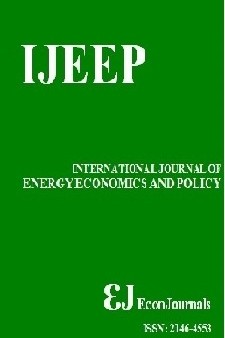Is the Best Generalized Autoregressive Conditional Heteroskedasticity(p,q) Value-at-risk Estimate also the Best in Reality? An Evidence from Australian Interconnected Power Markets
Is the Best Generalized Autoregressive Conditional Heteroskedasticity(p,q) Value-at-risk Estimate also the Best in Reality? An Evidence from Australian Interconnected Power Markets
- Başlangıç: 2011
- Yayıncı: İlhan ÖZTÜRK
Status of Electric Power Sector Reform in Russia
Positive and Negative Effects of Research and Development
Mohd Shahidan Shaari, Diana Nabila Chau Abdullah, Nur Salimah Binti Alias, Nor Syamimi Mohamed Adnan
An Investigation into the Electricity Supply and Economic Growth Nexus for South Africa
Hlalefang KHOBAİ, Sanderson ABEL, Pierre Le ROUX
Energy Consumption and Economic Growth in OECD Countries
Zukarnain ZAKARİA, Sofian SHAMSUDDİN
Carbon Future Price Return, Oil Future Price Return and Stock Index Future Price Return in the U.S.
The Relationship between Crude Oil and Coal Markets: A New Approach
The Impact of Oil Price Changes on Inflation in Pakistan
Mihail Nikolaevich DUDİN, еvgenia еvgenevna FROLOVA, Julia Alexandrovna ARTEMİEVA, Vitaliy Vasil'evich BEZBAH, Alexey Nikolaevich KİRSANOV
